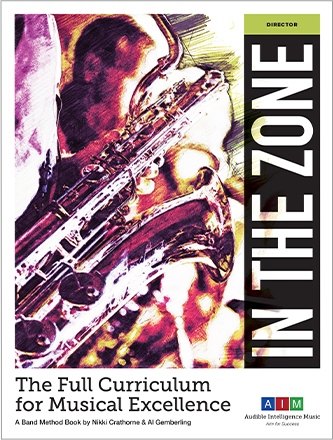Sign Up Below to Get Your Beta Access Key:
Notation
Students see music notation on the page but there is a deeper understanding of how music is notated when students write it themselves. Keep high standards for your students in this area. Make sure they are paying attention to detail with their notation. You can learn a lot about their understanding of music by observing their notation.
Time Signatures
We have included basic exercises to help students understand different time
signatures. They learn to determine how many beats are in a measure, what kind of note gets a beat, and how to put together different combinations of notes and rests to fill a measure in a given time signature.
Terms and Symbols
Each unit reviews basic terms and symbols so that the student will recognize them in a piece of music and will know what they represent. Isolating these terms and symbols makes learning them less intimidating than while trying to read notes, count rhythms, and get proper fingerings.
Rhythm
Rhythm is a major part of music so we have given extra attention in this area. We have included two worksheets in each unit that approach rhythms from different views. We also included a rhythm ensemble in each unit that can be clapped, played with sticks on chairs, played on instruments or anything you can come up with. We strongly encourage you to clap and count every exercise in the book before you play it with your ensemble. We have done this and the results have been amazing.
“
Understanding the basics of notes, rhythms, and keys is critical for students to learn to play with confidence and musical artistry. I especially like the Unit format of In The Zone and the systematic progression of skill building and theory exercises, songs and composer information that provides a broad foundation of musical elements. In The Zone is a proven basic methods resource that I use not only with beginning students but also as a source of review and technical repetition with students that have played for some time.
Gene Lubiens, Teacher
“
Have you ever heard a beginning band that had a fabulous core sound and wondered, how do they do that! Nikki Crathorne’s bands are those bands, and now she has shared her secrets of success in this new method book. I have used this book for a couple of years and when I take my bands to festivals I am asked, “How do you get your trumpets to sound like that!” This book focuses on the fundamentals, allowing students to focus on their sound.
Patsy Huddleston, Teacher
“
In The Zone – a different music book teaching the basics of music.
– could be used by an adult wanting to finally learn how to read music.
– can be used to teach “playing by ear” students how to read music.
Larry Hightower, Performer
Copyright 2017, Audible Intelligence Music

